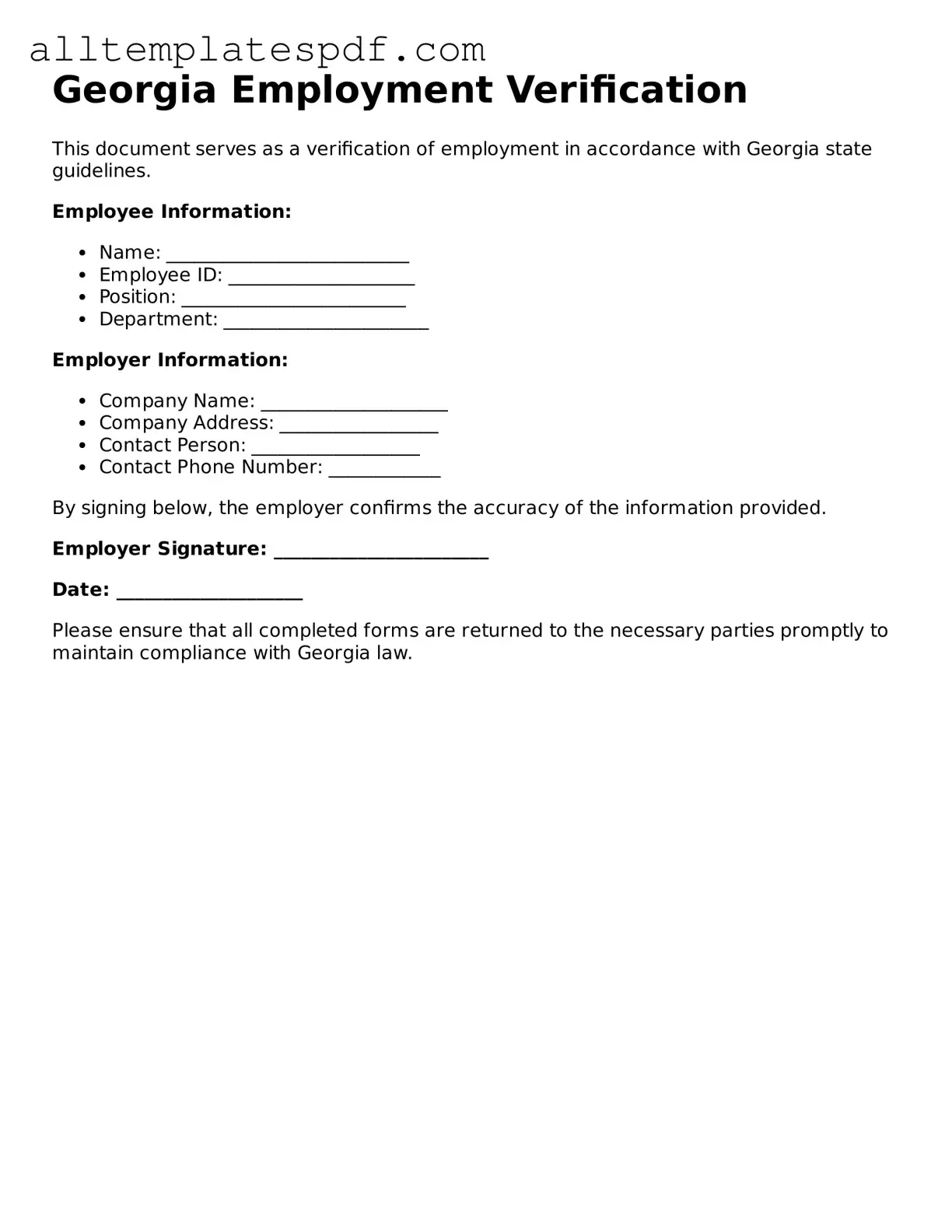Instructions on Utilizing Georgia Employment Verification
Once you have the Georgia Employment Verification form in hand, you will need to complete it accurately to ensure a smooth verification process. This form serves as an essential document for employers and employees alike, verifying employment status and other relevant details. Follow these steps carefully to fill out the form correctly.
- Begin by entering your personal information. This includes your full name, address, phone number, and email address.
- Next, provide your employment details. Fill in the name of your employer, the address of the company, and your job title.
- Indicate your employment dates. Specify the start date and, if applicable, the end date of your employment.
- In the section for hours worked, list your average hours per week. Be as accurate as possible to reflect your typical work schedule.
- Include your salary information. Enter your current salary or hourly wage, along with any relevant bonuses or commissions.
- Review the signature section. Sign and date the form to confirm that all information provided is true and accurate.
- Finally, ensure that you have included any necessary attachments or supporting documents, if required.
After completing the form, you may need to submit it to your employer or the designated verification authority. Keep a copy for your records, as it can be useful for future reference or inquiries.
